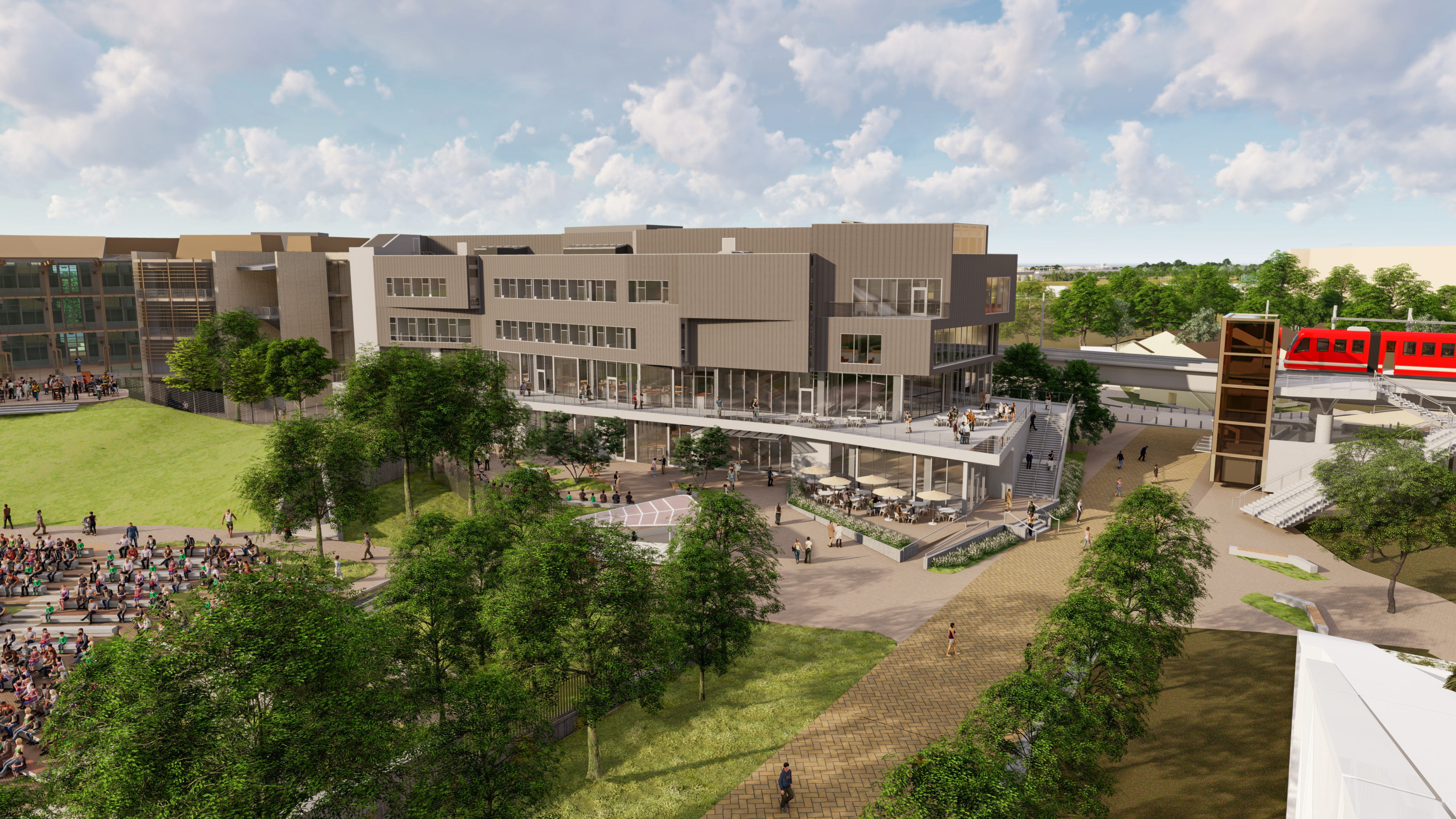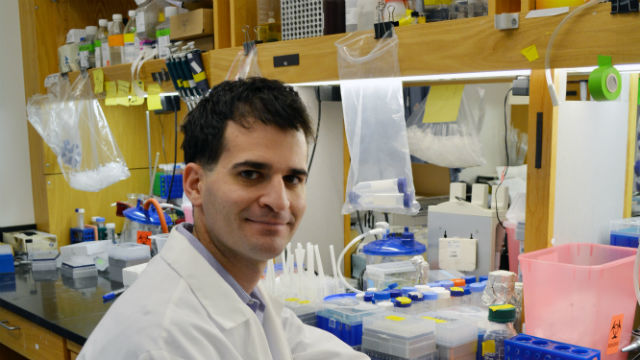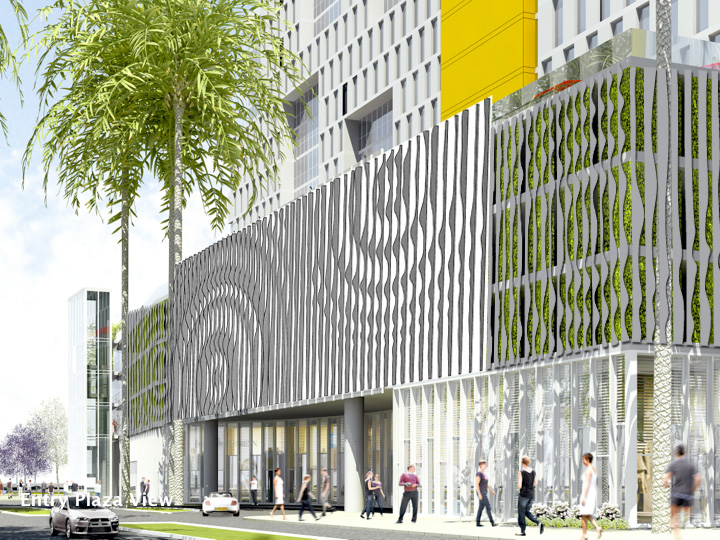Daily Business Report-Oct. 21, 2019
Rendering of UC San Diego Design and Innovation Building. (All renderings courtesy of UC San Diego)
UC San Diego sets groundbreaking
for new Design and Innovation Building
and entry way to the campus
When UC San Diego officials break ground Thursday for a new Design and Innovation Building, they envision it as part of a “grand entrance” to the campus that also will include an adjacent amphitheater and park and connection to the university Blue Line Trolley extension.
The multipurpose space is expected to be finished in spring 2021, months before the first riders will travel on the Blue Line Trolley. The university sees this as an inviting “foyer,” welcoming everyone to the campus.
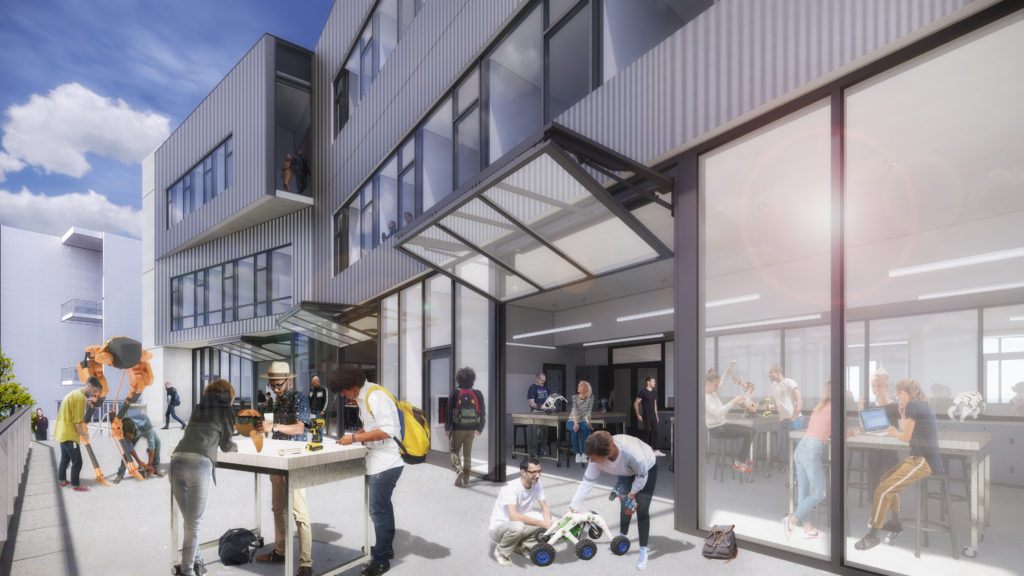
The Design and Innovation building and the adjoining amphitheater and park will also be a connection hub for our campus, industry partners, and the greater community. It was conceived with the goal to encourage collaboration between Jacobs School of Engineering, Visual Arts, Cognitive Science, the Office of Innovation and Commercialization, alumni, and the greater community. These collaborative spaces between these various units and academic disciplines is designed to further foster’s UC San Diego’s “entrepreneurial spirit.”
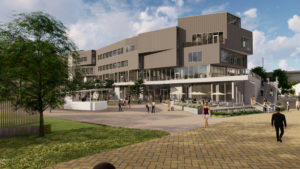
The Design and Innovation Building will contain workshops and maker space studios with equipment and laser cutters to work with wood, foam and more. Riders of the trolley will be able to view creative works come to life through glass exterior of the building. Campus officials envision many new products and services to be launched from the building.
Thursday’s groundbreaking ceremony will feature remarks from UC San Diego leadership and alumni. At 10:45 a.m., following the ceremony, there will be an “Innovation Showcase.” The showcase will feature interactive displays of projects underway from The Basement and The Design Lab.
____________________
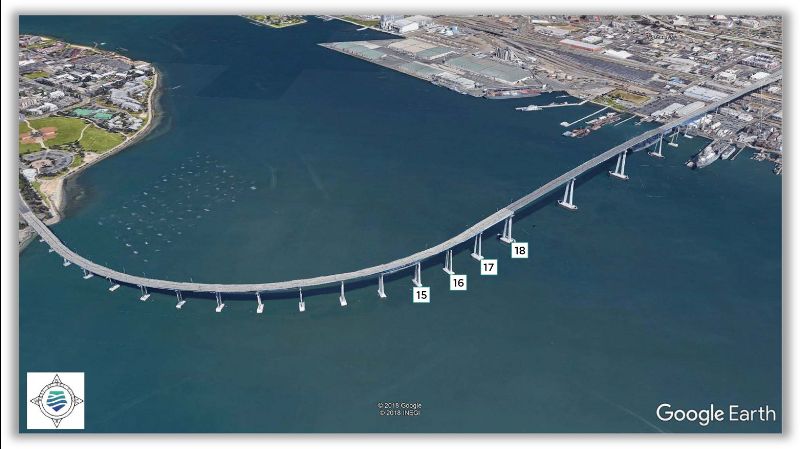
____________________
Port gets Coastal Commission OK to install
LED lights at the San Diego-Coronado Bridge
The California Coastal Commission has given the Port of San Diego the green light to temporarily install LED lights on four of the bridge’s mid-span piers as part of a test to gauge the environmental effects of a total bridge lighting project. The over-water lighting test has not yet been scheduled but is currently anticipated for mid-2020. Once it is complete, next steps include environmental review, finalizing the design, and permitting for full installation, which will include obtaining another Coastal Development Permit from the Coastal Commission.
____________________
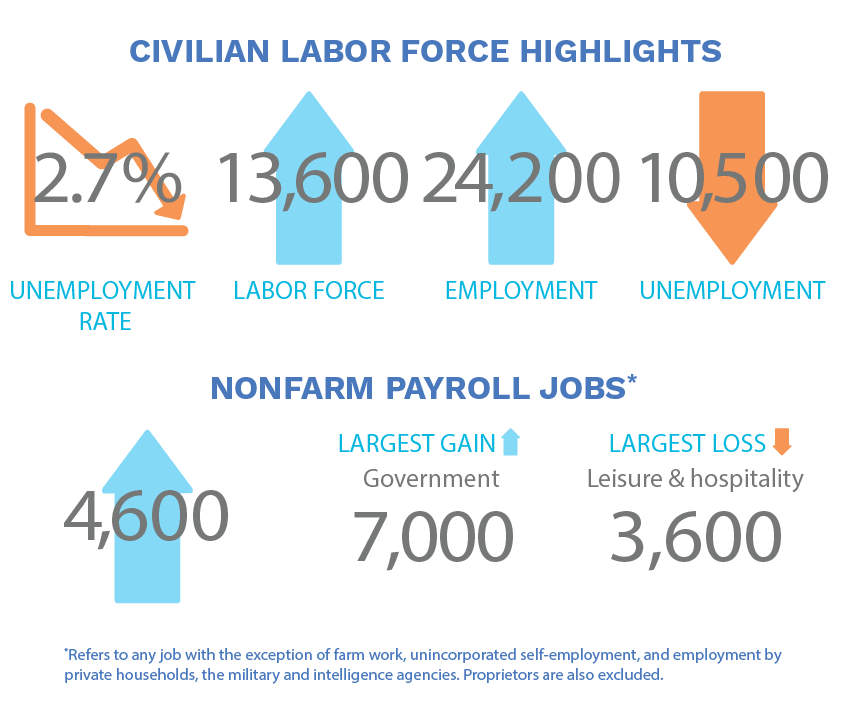
San Diego County jobless rate
drops to 2.7 percent in September
San Diego County’s unemployment rate for September was 2.7 percent, down from 3.4 percent in August and below the 3.1 percent jobless figure from a year ago, the state Employment Development Department reported.
The jobless rate for September was 3.5 percent for California and 3.3 percent for the nation.
Between August 2019 and September 2019, total nonfarm employment increased from 1,510,400 to 1,515,000, a gain of 4,600 jobs. Total farm employment remained unchanged over the month.
Between September 2018 and September 2019, total nonfarm employment increased from 1,484,400 to 1,515,000, adding 30,600 jobs. Agricultural employment decreased by 200, from 9,300 to 9,100.
____________________
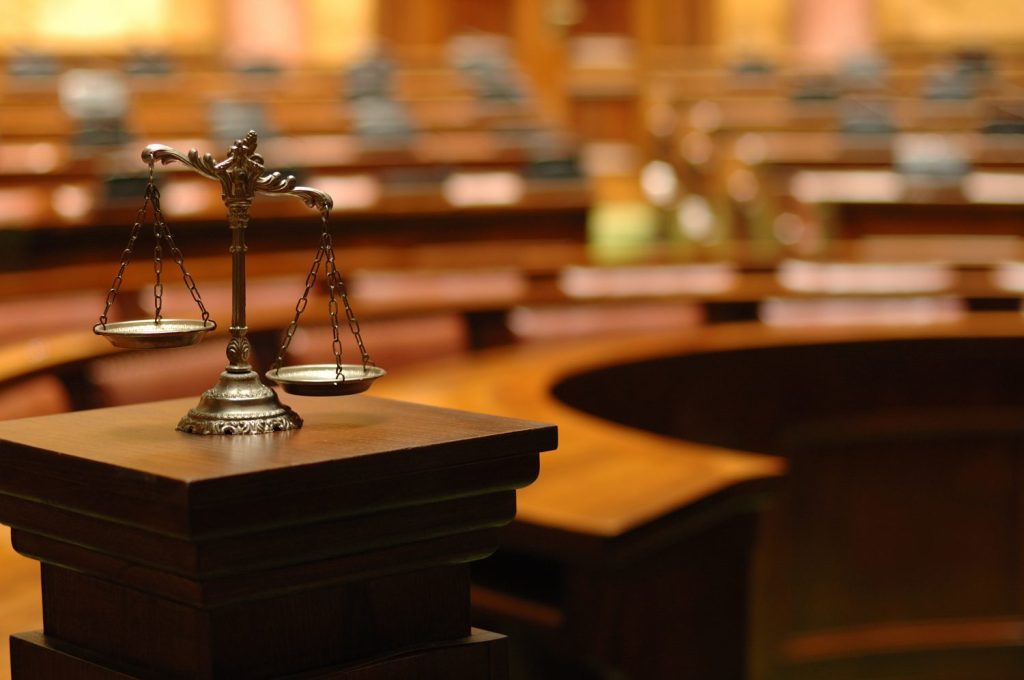
Plaintiffs and their lawyers won big
in 2019 under Gov. Gavin Newsom
Dan Morain | CALmatters
Plaintiffs and their attorneys found a strong political ally in Gov. Gavin Newsom in 2019, The Recorder’s Cheryl Miller reports.
Newsom signed legislation expanding the right to sue that Jerry Brown vetoed or that had stalled in the Legislature.
Newsom signed all eight bills sponsored by the Consumer Attorneys of California that reached him, plus one pushed by Democratic Assemblywoman Lorena Gonzalez of San Diego that opens the way for more victims who were molested as children to sue private institutions and public schools.
Among the measures cited by Miller and others:
- Settlement agreements can no longer contain no-rehire provisions.
- Employers won’t be able to force new hires to sign arbitration agreements as a condition of their employment.
- Defense attorneys in asbestos-related cases will be required to limit the time they spend deposing people who, according to a physician, are likely to die within six months from mesothelioma, which is caused by asbestos inhalation.
The big test: Expect a legislative effort to overhaul the 1975 law that caps damages in medical practice lawsuits. Brown signed that legislation in his first stint as governor. Plaintiffs attorneys say the cap, which has never been raised, limits their ability to represent malpractice victims.
____________________
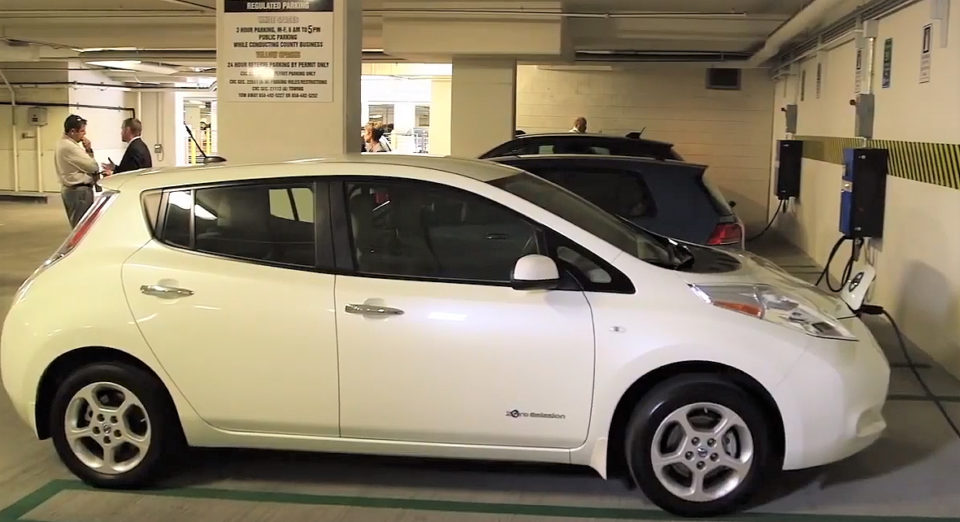
County approves electric vehicle
roadmap covering unincorporated area
The county Board of Supervisors has taken steps to build out electric vehicle charging infrastructure in the county’s unincorporated area and encourage electric vehicle (EV) ownership among residents. The board last week approved a roadmap that puts the county on a path to meet state vehicle and charging infrastructure goals in the next decade.
The roadmap identified several ways to invest in EV technology, including:
- Installing EV charging stations at County facilities that are accessible to the public
- Building out the electric charging infrastructure in the unincorporated area
- Collaborating with regional partners to encourage that they buy and use more EVs
- Replacing more than 500 existing gas-powered County vehicles with EVs by 2027
Under the plan presented to the board, the county will partner with private and public entities to install 3,000 publicly accessible EV charging stations in the unincorporated area by 2030. Among those stations will be 100 EV chargers at seven county facilities across San Diego County. The county will also make significant investments in its own fleet, adding a total of 501 electric vehicles by fiscal year 2026-27. Once the upgrades are made, this will represent more than 10 percent of the county’s entire fleet.
____________________
UC San Diego breaks record with
$1.3 billion in research funding
David Cheresh, professor and vice chair of pathology at the University of California San Diego School of Medicine, will be able to continue his research into cancer’s ability to overcome stress, gain drug resistance and metastasize thanks to a $4.2 million Outstanding Investigator Award from the National Cancer Institute. Cheresh’s research is one of thousands of projects at UC San Diego funded through contracts, grants and research gifts.
In fiscal year 2019 (July 1-June 30), UC San Diego earned $1.35 billion in sponsored research funding, a 10 percent increase over the previous year. This is the largest number ever for the university and marks the 10th consecutive year the campus has earned more than $1 billion in funding to support its extensive research enterprise.
Funding from federal agencies reached $803 million, an increase of more than 18 percent from last year’s number. The largest portion of federal funding came from the Department of Health and Human Services at $495 million. Other significant federal funding came from the National Science Foundation ($115 million), the Department of Defense ($101 million) and the National Oceanic and Atmospheric Administration ($35 million).
Contracts and grants from industry sponsors accounted for $205 million, an increase of 6 percent over the previous year. Funding from the state of California rose to over $52 million, marking a record-high amount.

